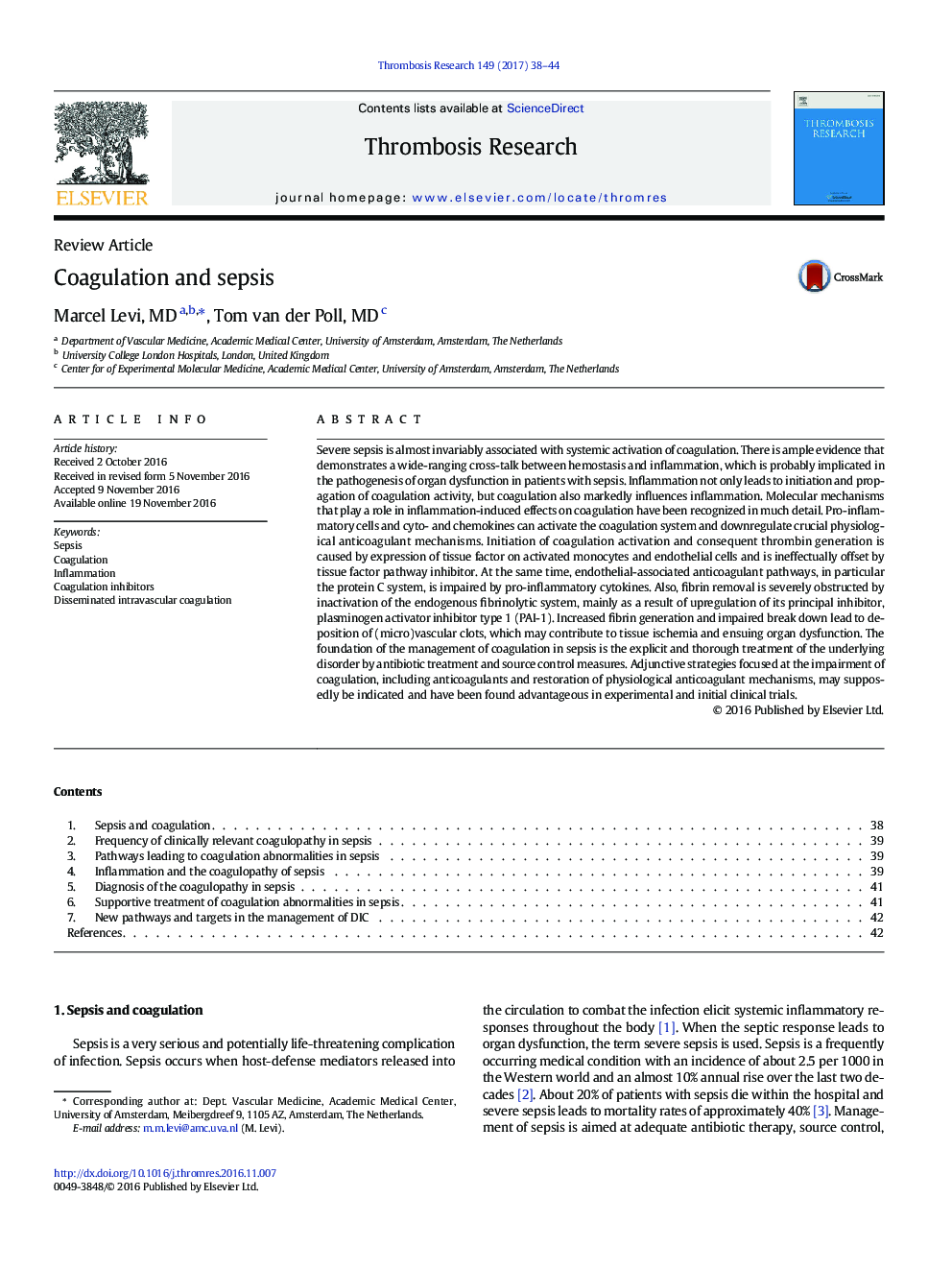| کد مقاله | کد نشریه | سال انتشار | مقاله انگلیسی | نسخه تمام متن |
|---|---|---|---|---|
| 5621935 | 1579194 | 2017 | 7 صفحه PDF | دانلود رایگان |
- Disseminated intravascular coagulation (DIC) is a syndrome characterized by systemic intravascular activation of coagulation, leading to widespread deposition of fibrin in the circulation.
- Recent knowledge on important pathogenetic mechanisms that may lead to DIC has resulted in novel preventive and therapeutic approaches to patients with this condition.
- Thrombin generation in DIC proceeds via the (extrinsic) tissue factor/factor VIIa route and simultaneously occurring depression of inhibitory mechanisms, such as antithrombin and the protein C system.
- Also, impaired fibrin degradation, due to high circulating levels of PAI-1, contributes to enhanced intravascular fibrin deposition.
- Coagulation may have a profound modulatory effect on inflammatory pathways as well.
- The diagnosis of DIC can be made by sensitive laboratory tests, however, most of these tests are not readily available in a routine setting.
- A reliable diagnosis can also be made on the basis of a small series of routine lab tests that can be combined in a scoring algorithm (ISTH-DIC score).
- The cornerstone of the management of DIC is the specific and vigorous treatment of the underlying disorder.
- Strategies aimed at the inhibition of coagulation activation or restoration of anticoagulant pathways have been found beneficial in experimental and initial clinical studies but their effect on clinically relevant outcomes is less clear.
Severe sepsis is almost invariably associated with systemic activation of coagulation. There is ample evidence that demonstrates a wide-ranging cross-talk between hemostasis and inflammation, which is probably implicated in the pathogenesis of organ dysfunction in patients with sepsis. Inflammation not only leads to initiation and propagation of coagulation activity, but coagulation also markedly influences inflammation. Molecular mechanisms that play a role in inflammation-induced effects on coagulation have been recognized in much detail. Pro-inflammatory cells and cyto- and chemokines can activate the coagulation system and downregulate crucial physiological anticoagulant mechanisms. Initiation of coagulation activation and consequent thrombin generation is caused by expression of tissue factor on activated monocytes and endothelial cells and is ineffectually offset by tissue factor pathway inhibitor. At the same time, endothelial-associated anticoagulant pathways, in particular the protein C system, is impaired by pro-inflammatory cytokines. Also, fibrin removal is severely obstructed by inactivation of the endogenous fibrinolytic system, mainly as a result of upregulation of its principal inhibitor, plasminogen activator inhibitor type 1 (PAI-1). Increased fibrin generation and impaired break down lead to deposition of (micro)vascular clots, which may contribute to tissue ischemia and ensuing organ dysfunction. The foundation of the management of coagulation in sepsis is the explicit and thorough treatment of the underlying disorder by antibiotic treatment and source control measures. Adjunctive strategies focused at the impairment of coagulation, including anticoagulants and restoration of physiological anticoagulant mechanisms, may supposedly be indicated and have been found advantageous in experimental and initial clinical trials.
Journal: Thrombosis Research - Volume 149, January 2017, Pages 38-44
